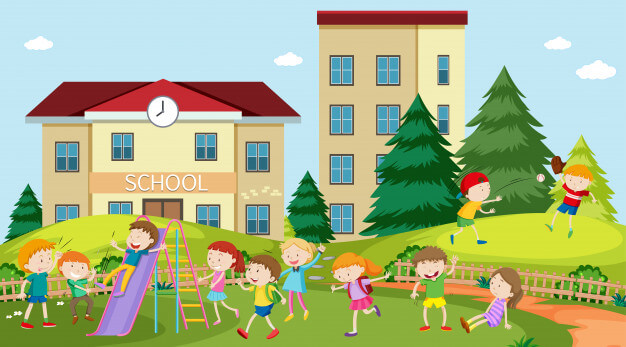
The Notion of Curricular & Extracurricular Activities!

‘There will be no hard separation of learning areas in terms of curricular, co-curricular or extracurricular areas – Equal status for all’
The above statement is one of the clauses included in the famous Draft National Education Policy 2019 headed by Dr. K. Kasturirangan. The policy is trending all over the internet especially after the controversies over including Hindi as a compulsory subject nationwide. It is attracting flocks of intellectuals, schools, and journalists with their opinions on various other points covered in the draft.
But the decision of the committee to discard the extra from curricular seems like a ray of hope! Accept it or not, we are all the products of an (unfair) ancient education system in India. And now, we look back just to imagine how different the situations would have been?
Since childhood, we are moulded to fit a particular stereotype concerning education. We are trained to give academics the highest priority, sports somewhere down the list and extracurricular activities like theatre, crafts, music, painting, etc. disappear behind the pile of grades. With the neck to neck competition in the class and favouritism floating around, students don’t feel the need to go out and play or take a productive break. They just need to score more than him or her or everyone basically and stay within the boundaries of ‘curricular activities’
Students, of course, not willingly get drowned in the textbooks and lags behind their overall development. This leads to emotional imbalance and insecurity, giving birth anxiety, low self-esteem and so on the big family of psychological imbalance. Furthermore, Indian society doesn’t really understand the psychological development of a student as the education system in India has been glorifying scorecards since ages.
For instance, a child with a fever is properly taken care of by every possible member of the family. Appointments are done hurriedly with a good deal of doctors every corner to cure the fever as soon as possible. But when the same child suffers from stress or some other emotional problem, in most of the cases you see that the parents are calm, no one’s a bundle of nerves, except the child. The behaviour seems to be invisible. If the child is quiet, he or she is just shy or there goes the famous remark of all time – ‘‘this happens while growing, this is no big of a deal.’’
This is no generation gap, this is a relay race between the generations where conventions are passed down like a baton.
Exam fever is trolled with LOL, learning disabilities are tagged as laziness, and interest in activities apart from academics is certainly a big NO!
Where does this attitude come from?
These (scholastic) stereotypes are the product of the education system which has been overlooking millions of struggles for many years. So, when I heard of this clause, I was relieved. Even though there is no description of whether there would be options for students to choose from what activities to pursue along with academics, this clause brings a smile.
We always tend to find big solutions to big problems but sometimes the biggest problem has the simplest solution.
The answer lies in changing the perception of education. Parents, teachers, school management should strive to give children an environment to grow strong physically, mentally and academically and not just the latter.
“The highest education is that which does not merely give us information but makes our life in harmony with all existence”
– Rabindranath Tagore
How is this clause in the policy going to help students?
This clause will break the ROUTINE that has been suppressing creativity and skills. Generations are moving forward with time and so should the education system in India. Children are exposed to many things apart from academics these days. There are many children novels in the market, movies, social media, etc. are making children aware of their skills and abilities at an early age. The brain is evolving as the genes and hence the generation gap. A stiff system of imparting education widens the generation gap.

What needs to be focused?
Foremost, we have to understand that schools are not just for exams, homework, and competition, but a very important step in a child’s life. A phase in the life which teaches the child about the outside world. When I was in school, many of my classmates never used to participate in any activities apart from academics. For few, it was a voluntary choice but for few, it was because of the fear of losing marks or their position in the competition around. The atmosphere only smelled of grades; all constrained and stiff. The word ‘extra’ before curricular did make a difference, as for some of my classmates, those activities were just a burden, chosen to ignore. Extra means not compulsory and something that doesn’t get marks is only a waste of time.
But now the education policy in India is pointing in the right direction with respect to this clause, I think we should give them the credit. Giving equal status to curricular, co-curricular and extracurricular activities will bring the required changes in the education system.
If students are given a break from the back to back periods in school, I am sure they’ll certainly be able to manage stress properly and put their hearts in everything they do. This attitude will eventually reflect in the exams. A perfect balance of academics and these activities is what we need!
Following are some essential life skills a child can acquire if work and play is balanced:
- Good self-esteem
- Improvement in social skills
- Teamwork and development of analytical abilities
- Leadership skills
- Able to understand, cope and grow from failures and rejection
- Stress management skills
- Organizational and problem-solving abilities.
In short, a healthy mind and body. That’s the most important thing, isn’t it?
Generally, as society has been for ages, we follow a standard routine. Starting from the schools, we run behind grades; then behind colleges; followed by jobs; then money and so on. In all this running, we gain experiences and as we enter the next phase of running, we regret running earlier. This continues till the old age where we just sit in balcony knitting and pondering over all the worthless running we did the entire life. But giving a balanced life to a child at an early age can prevent all the chasing things around. They’ll understand the meaning of life in a better way. We don’t want any more regrets!
Some would point out the flip side that making everything curricular would be overburdening for the kids. But then playing your favourite game on the playground isn’t burdening, is it?
Now, everything depends upon how schools perceive this clause and how will this be carried forward in the curriculum. It’s all about the wait and watch. In theory, surely it is a great move by the government but how the schools perform in the ‘practicals’ is the big question!
Yes, I can feel it…it is exam time for schools!
Also, read 8 Types of Co-curricular Activities In School You Can Choose.
Recomended Blogs

It indeed is not easy to learn something new! Getting out of your comfort zone and learning something

Zedua
1 year ago

Many successful people have attributed their success to the practice of Meditation. How great i

Zedua
2 years ago

Hybrid classes is the trend in the air or was it already there in an implicit form? Questions are ofte

The Green School Bangalore
2 years ago
